30.06.2023 - АAluminium Association
The use of aluminium in shipbuilding and construction of berthing infrastructure was discussed at a round table as part of the business programme of the exhibition and conference "Small and Light Shipbuilding of Russia" (SLS Russia 2023) in Kaliningrad. The organiser of the event as an information partner of SLS Russia was the Aluminium Association, whose member companies produce and supply semi-finished and finished aluminium products to shipbuilders.
INNOVATIONS FOR IMPORT SUBSTITUTION
Experts gathered at the discussion platform in the Kaliningrad Museum of the World Ocean considered the possibilities of applying domestic innovations based on the use of aluminium alloys, including for solving the problems of import substitution in shipbuilding.
The industry representatives also noted the need to unify the requirements of the Russian Maritime Register and the Russian Classification Society (RCS) when putting aluminium ships into service.
Presentations were made by representatives of the Aluminium Association, Youth Design Bureau of N.E. N.E. MSTU. Bauman, Kamensk-Uralsky Metallurgical Plant (KUMZ), Cheboksary-based Sespel, Ushakov Shipyards, Avial and Alumarina. The session was also attended by experts from the Centre for Cluster Development and Entrepreneurship Support of the Kaliningrad Region.
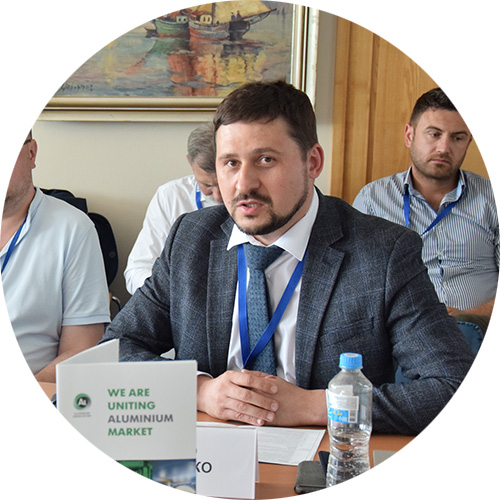 Victor Ivanenko, Head of Shipbuilding at the Aluminium Association, introduced the round table participants to the latest developments offered to shipbuilders. He noted that aluminium is one of the main materials for small and medium-sized shipbuilding in Russia.
Victor Ivanenko, Head of Shipbuilding at the Aluminium Association, introduced the round table participants to the latest developments offered to shipbuilders. He noted that aluminium is one of the main materials for small and medium-sized shipbuilding in Russia.
"We are committed to building vessels with the right technical characteristics and understandable cost effectiveness. Vessels should consume less fuel, have better weight characteristics and be environmentally friendly," emphasised Viktor Ivanenko.
Companies and research and production centres of the Association are developing new alloys and semi-finished products created by casting, rolling and extrusion methods. The Association's task is to ensure that these solutions are available at the point of consumption and to create solutions that are favourable to manufacturers in terms of shipbuilding costs.
ON ALL SAILS
According to Viktor Ivanenko, about 175,000 small boats are registered in Russia per year, of which about 18,000-20,000 are new, made of aluminium.
It's a big market to work with.
There is also significant export potential.
In recent years, small boat manufacturers have achieved outstanding results.
If five to seven years ago many boats were similar to simple, so-called "Kazanki", now they are often high-tech products.
There are also notable successes for manufacturers of medium-tonnage vessels. In June, the world's first electric river trams produced by Emperium were launched in Moscow. The structure of each one contains a total of about six tonnes of aluminium. For these heavy battery vessels, hull and super-structure weight reduction is critical. Ten trams are now already in the capital, with a total of 21 vessels due to be delivered by the end of 2023.
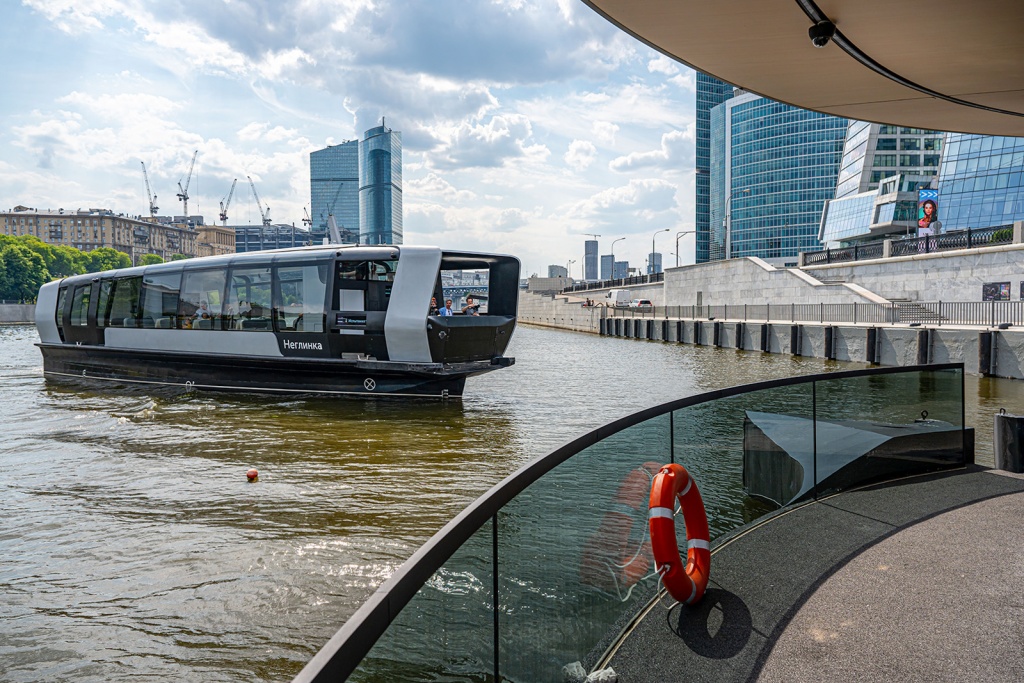
In 2022 - 2023, two electric-powered vessels "Ekokhodom" were produced by order of VodokhodЪ. They have already been delivered to Nizhny Novgorod and Krasnoyarsk.
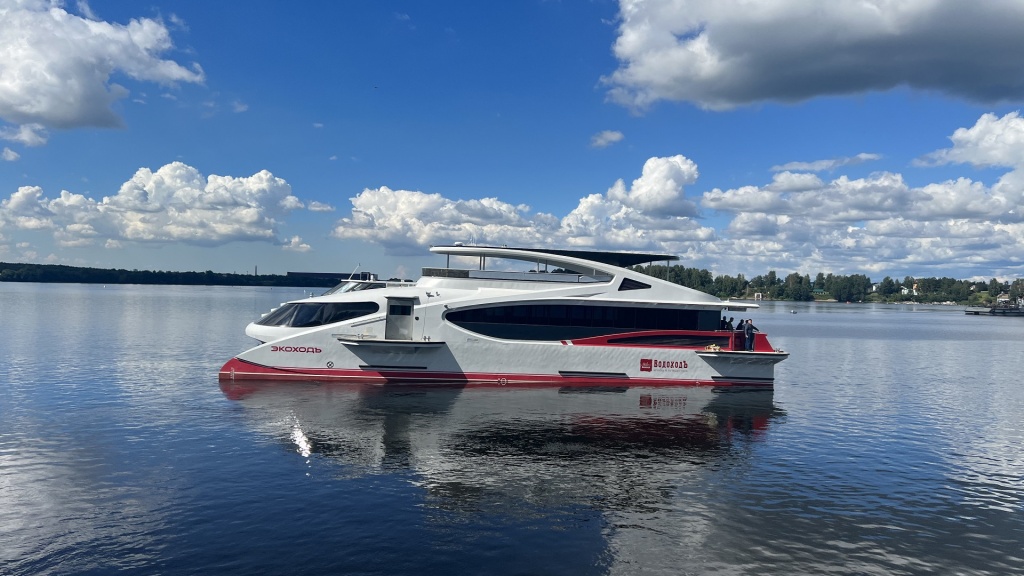
Two more aluminium vessels are in production in Irkutsk at the shipyards of the East Siberian River Shipping Company. The HSC150B project is a hydrofoil catamaran with a dynamic sustainment principle. In this project the designers of Sea-Tech Company for the first time in Russia applied a complex solution: welded large-size lightweight panels (SCO-panels) and new alloy 1581, which together allowed to lighten the superstructure by 7.2% in comparison with the use of standard pressed large-size panels made of alloy 1561. The first catamaran of this series is expected to be launched in the autumn.
Alloy 1561 is widely represented in the design of the hydrofoil vessel Meteor 2020 developed by Sea-Tech and manufactured by Zelenodolsk Shipyard. Two vessels have been launched and a total of four such SPCs are under construction - each with 23 tonnes of aluminium alloy products.
A number of demanded projects are being implemented by the R.E. Kovdorov CKB for SPK located in the Nizhny Novgorod region. Alexeeva. In addition to high-speed hydrofoil boats "Sagaris", in the boathouses of the production complex of the Central Design Bureau are being built SPK "Meteor-120R" - a total of seven vessels, as well as "Valday-45R" - the 18th vessel of the series. The demand for this type of vessel is very high, so there is reason to believe that their number will be significantly increased.
More than 50 tonnes of aluminium alloys are expected to be used in the superstructure of RPV 8714, a vessel under construction at SMRP. Among full-size cruise ships we should mention the liner "Mustai Karim" (project PV300), which was commissioned in 2020 and now operates in the Volga-Nevsky basin with coastal access to adjacent seas. The vessel has an aluminium superstructure. Its twin brother "Peter the Great" (project PV300VD) is due for completion in August this year. Aluminium superstructure is also provided in the construction of motor ships of the project "Karelia", designed for 180 passengers. Three vessels have already been laid down.
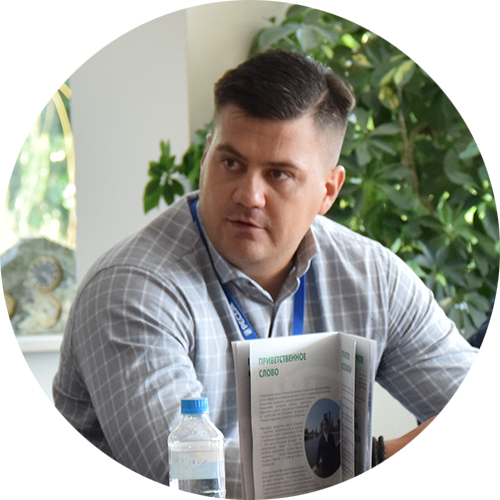 Semyon Danilin, CPO of Kaliningrad-based Ushakov Shipyards, spoke about the experience of building the Sotalia vessel, which was first presented in June 2022 at SPIEF. The 19-metre modular vessel can carry 30 passengers and reach a speed of 25 km/h.
The first "Sotalia" was made of aluminium alloys 1561 and 5083 by order of JSC "OSK".
The total weight of the aluminium structural elements of this vessel is 5.5 tonnes.
An important feature of this project: it is almost entirely a domestic development, with virtually no imported parts.
"Sotalia" can be used in various capacities: as a river tram, excursion and transport vessel or as a floating medical centre.
Semyon Danilin, CPO of Kaliningrad-based Ushakov Shipyards, spoke about the experience of building the Sotalia vessel, which was first presented in June 2022 at SPIEF. The 19-metre modular vessel can carry 30 passengers and reach a speed of 25 km/h.
The first "Sotalia" was made of aluminium alloys 1561 and 5083 by order of JSC "OSK".
The total weight of the aluminium structural elements of this vessel is 5.5 tonnes.
An important feature of this project: it is almost entirely a domestic development, with virtually no imported parts.
"Sotalia" can be used in various capacities: as a river tram, excursion and transport vessel or as a floating medical centre.
In his speech Semyon Danilin also drew attention to a number of problematic issues concerning the unification of the methodology of certification and recognition of materials in the Russian Maritime Register and the Russian Classification Society.
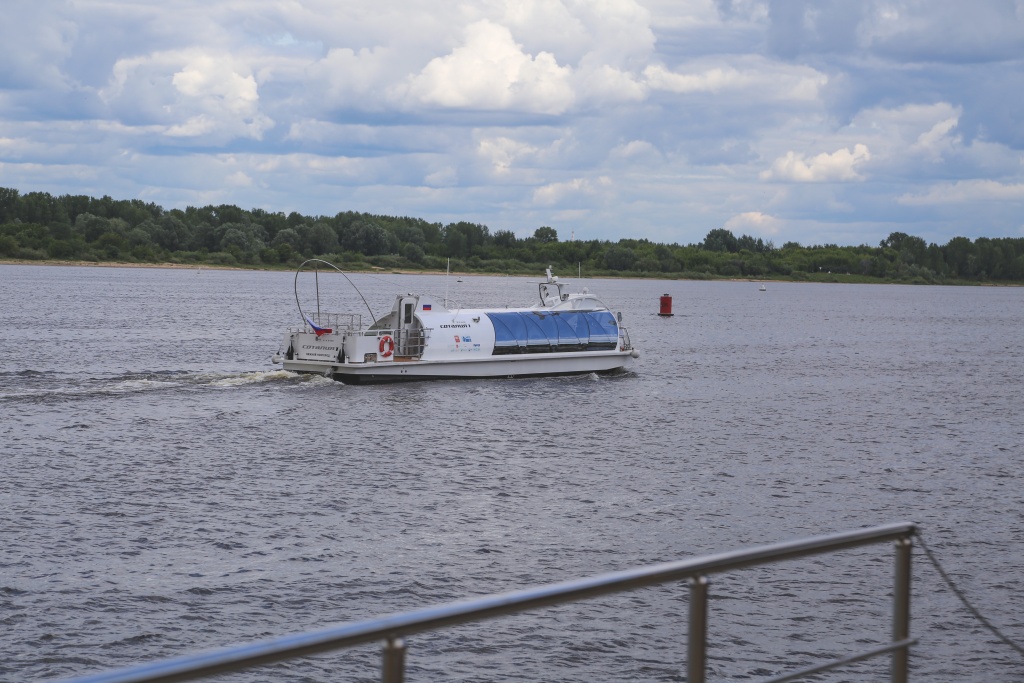
All the projects mentioned above involve the capacities of the companies of the Aluminium Association, providing the most modern and necessary aluminium solutions for the domestic innovative shipbuilding.
ALUMINIUM RENAISSANCE
Dmitry Ofitserov, Head of the Centre for Cluster Development and Entrepreneurship Support of the Kaliningrad Region, called the processes taking place in small and light-tonnage shipbuilding a renaissance.
Previously, the needs of the domestic market were covered by foreign manufacturers, which displaced Russian companies.
Now the situation has changed.
One of the examples of turning to domestic technologies and materials is the high-speed catamaran-type boat "Dobrynya". The hull of this vessel with a carrying capacity of up to five tonnes and a passenger capacity of up to ten people is made of aluminium alloy at the Yantar Shipyard.
According to Dmitry Ofitserov, Kaliningrad region enterprises are capable of producing competitive vessels and products for Russian and foreign markets.
The development of cooperation between Kaliningrad companies and the Aluminium Association will allow to solve a complex task: to expand the consumption of domestic aluminium products, to provide shipbuilders with modern materials and to raise shipbuilding technologies in the region to a new level.
PUL MATERIALS AND TECHNOLOGIES
A range of aluminium alloys are used in modern shipbuilding.
These include both widely applicable, maximally available ones, such as 5083, and alloys with enhanced mechanical properties, such as Alloy1581.
There is also a new alloy AD35h, which has improved performance characteristics compared to the foreign alloy 6082.
The choice in favour of one alloy or another depends on the task the manufacturer is solving, as well as the need to provide a competitive price for the end product.
Victor Ivanenko said that the 1581 alloy of the aluminium-magnesium system developed at ILMiT with small additions of scandium allows achieving the highest strength and performance properties at a lower weight of aluminium structures. Compared to standard 5083, the new alloy has about 30 per cent higher yield strength, which is used by designers in strength calculations.
Alloy 1581 has already found application in the manufacture of small boats. For example, BRO Boats (Rostov-on-Don) has created a boat from this alloy, the weight characteristics of which turned out to be significantly better compared to a similar product made of alloy 5083. According to Denis Serkov, director of BRO Boats, the confirmed hull weight reduction was 14 per cent (253kg vs 294kg).
14% weight reduction of the ship's hull using innovative aluminium alloy 1581
Innovative solution for shipbuilding in Russia - SKO-panels. For the first time a hovercraft "Huska" was manufactured from this semi-finished product. The manufacturer and supplier of this semi-finished product is a member of the Aluminium Association - CNII KM Prometey (St. Petersburg). Another member of the Association, the Cheboksary enterprise Cespel, supplies the necessary equipment. The main characteristics of this semi-finished product, which is created by friction stir weld-ing and is characterised by its ease of installation: thickness from 1.5 mm with low tolerances during fabrication and a length of 8000 mm with unlimited width. This element can have curvatures in 3D planes and different orthogonal set to maximise its approximation to the ship's outline.
Another essential product is aluminium protectors for corrosion protection of ships, tanks and other equipment. These products can be made in any geometry and from various alloys - depending on the task at hand.
A promising direction is cables with aluminium core for ship applications. These cables can be manufactured on customer's request in accordance with GOST 7866.1-76.
Scandium-containing wire for welding innovative aluminium alloys with enhanced mechanical properties is a new product of Avial. The plant also produces corrosion protection wire for marine and river vessels. New specifications for welding wire used in shipbuilding were finalised. The thickness of such wire can be from 0.5 to 10 mm, and the weight of the coil is from 200 to 600 kg.
A unique method of friction stir welding is used at the Cheboksary enterprise Cespel.
As the marketing department specialist Evgeny Ivanov noted, the use of this type of welding allows to join the material without melting and does not change its composition.
The company has successfully mastered and launched a mobile welding complex.
During transport, the system is mounted on a mobile platform using its own hydraulic supports.
This allows its operative use at any enterprise, and practically removes restrictions on the dimensions of manufactured semi-finished products related to transport on public roads.
KUMZ produces a wide range of products for various industries, including shipbuilding. Denis Selivanov, Head of the Marketing Department, noted that the company has certificates of the Russian Maritime Register and the Russian Classification Society. The plant manufactures forging and rolling products: profiles, bars, pipes, forgings, sheets, fluted sheets and plates.
KUMZ specialists have developed two variants of improved properties for rolled products of the widely used aluminium alloy 5083. The first option is rolled 5083 H111 with improved characteristics. Thanks to special production technology, the sheet is strong and can be bent well, e.g. into the required geometric profile configuration. Such rolled products are more technologically advanced than the standard 5083 H111 sheet sold on the market. The second option is to roll 5083 in H116 and H321 delivery condition. Its sheets are significantly stronger than standard material and have increased corrosion resistance in salty seawater.
An extremely important project for achieving technological sovereignty in small boat building is the Russian outboard boat motor (OBM). This project, implemented by the Aluminium Association, the Youth Design Bureau of the N. E. MSTU. The project is designed to alleviate the problem of shortage of imported engines for small vessels. Specialists of the mentioned competence centres have developed and presented to the round table participants a prototype of an 80-100 hp engine based on the AVTOVAZ engine with a significant number of new aluminium parts in the power unit design. By the end of the year, it is planned to commis-sion a 2,000 square metre workshop in the Dubna SEZ, where domestic outboard motors will be mass-produced starting this year.
THE PATH TO THE NAVY
In accordance with the Strategy for the Development of Tourism in the Russian Federation until 2035, tourist facilities are being modernised and created in various regions of the country.
Among other things, hotel complexes are being built on the coasts of the Baltic, Black and Caspian Seas, as well as in the water areas of inland water bodies.
At the same time, the demand for construction of yacht marinas is naturally growing, especially in tourist clusters.
The concept for the development of domestic tourism envisages the construction of about 39 marinas.
Due to their undeniable aesthetic properties, ease of installation, high mobility and long service life, aluminium solutions in quay infrastructure have gained great acceptance and recognition in the Mediterranean, Gulf and other regions. In our country, where these structures are also represented, but are still exclusively of foreign origin, the Aluminium Association together with partners is working on a pilot project based on domestic solutions.
Russia has all the conditions for successful d-velopment of this area: there is a huge market, production potential and support of municipalities interested in making coastal areas more attractive for tourists. Among the already implemented projects, Viktor Ivanenko named the mooring infrastructure in the yacht club "Heidekrug" in the village of Vzmorie in the Kaliningrad region and the World Ocean Museum in Kaliningrad itself.
Sergey Ananyin, General Director of Alumarina LLC, shared the experience of creating this berthing infrastructure using aluminium components. Using its own long-term experience and foreign experience, "Alumarina" with the support of the Kaliningrad Oblast Centre for Entrepreneurship Development and the Aluminium Association is implementing a pilot project for the creation of wharf infrastructure made of aluminium alloys of fully domestic production - the first units of products should appear soon.
Among Alumarina's developments are about 20 project concepts for yacht harbours and marinas, including private ones. The versatility of application (attachment) of the pontoons allows for the creation of floating receptions, bars, baths - they are easy to line, install and operate. In addition to anchor car parks, there are projects for public transport stops in Kaliningrad, which in the future can be scaled to other regions of Russia.
***
***The overall outcome of the SLS Russia 2023 event was the confirmation of the growing demand among shipbuilders for aluminium-based materials and innovative Russian technologies, as well as the expansion of the scope of applica-tion of aluminium products through the development of quay infrastructure.
Introduction of innovations in the form of new alloys, semi-finished products and technologies makes it possible to successfully solve the problems of import substitution and increase of quality and competitiveness in the domestic ship-building industry.
The shipbuilding industry, in turn, is interested in lightweight, strong, corrosion-resistant and affordable materials, the use of which will provide both the necessary structural properties and reduce the cost of purchasing aluminium semi-finished products and assembling ships. Manufacturers of passenger, high-speed and innovative vessels seeking to improve the weight and environmental performance of water transport see significant development potential for aluminium solutions.

